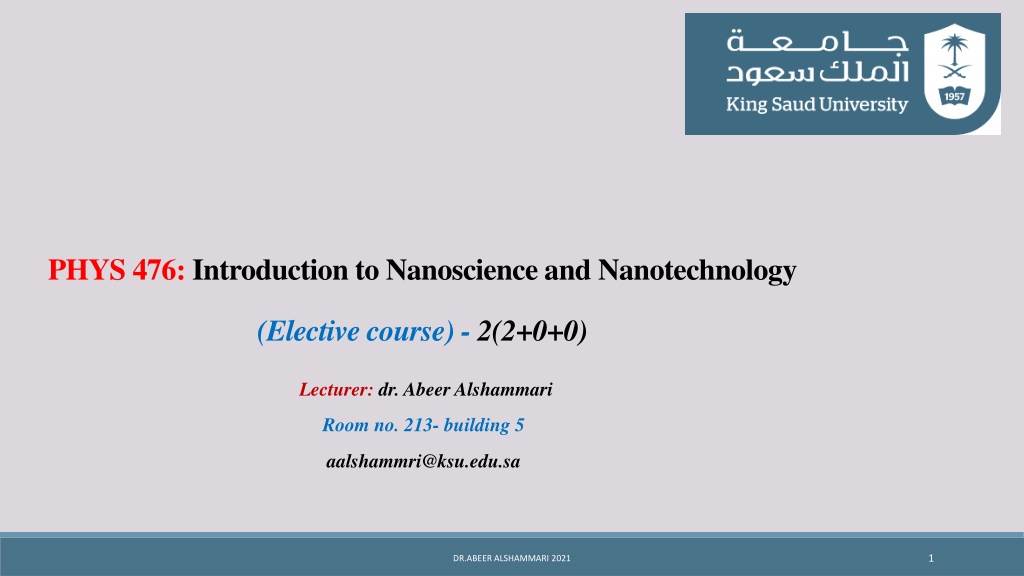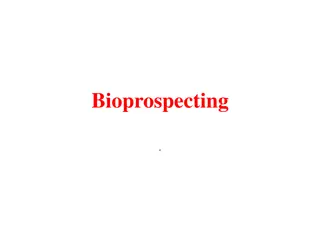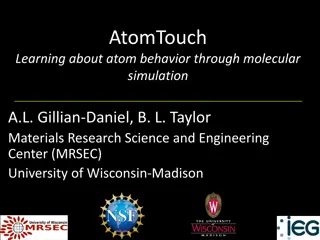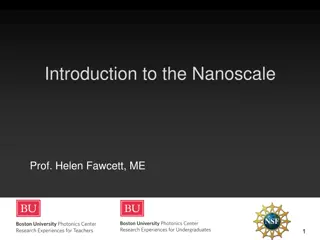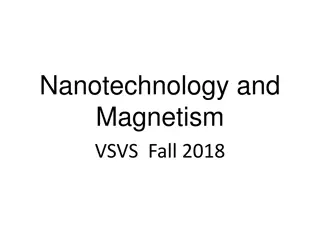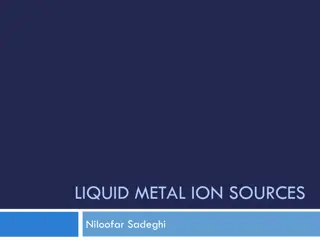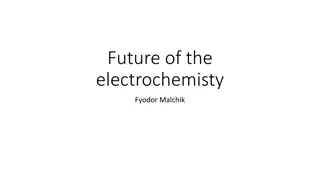Nanoscience and Nanotechnology with Dr. Abeer Alshammari
Delve into the fascinating world of nanoscience and nanotechnology through the elective course PHYS 476 with Dr. Abeer Alshammari. Learn about the unique properties of nanomaterials, including microstructure, defects, dislocations, twins, stacking faults, and more. Discover how nano-dimensions impact material behavior, such as elastic properties and melting points, and explore the exciting realm of magnetic, electrical, optical, thermal, and mechanical properties at the nanoscale.
Download Presentation

Please find below an Image/Link to download the presentation.
The content on the website is provided AS IS for your information and personal use only. It may not be sold, licensed, or shared on other websites without obtaining consent from the author.If you encounter any issues during the download, it is possible that the publisher has removed the file from their server.
You are allowed to download the files provided on this website for personal or commercial use, subject to the condition that they are used lawfully. All files are the property of their respective owners.
The content on the website is provided AS IS for your information and personal use only. It may not be sold, licensed, or shared on other websites without obtaining consent from the author.
E N D
Presentation Transcript
PHYS 476: Introduction to Nanoscience and Nanotechnology (Elective course) - 2(2+0+0) Lecturer: dr. Abeer Alshammari Room no. 213- building 5 aalshammri@ksu.edu.sa 1 DR.ABEER ALSHAMMARI 2021
Unique Properties of Nanomaterials 2.1 Microstructure and defects in nanocrystalline materials 2.1.3 Grain boundaries, triple junctions and disclinations 2.1.1 Dislocations 2.1.2 Twins, stacking faults and voids 2.2 Effect of nano-dimensions on materials behaviour 2.2.6 Magnetic properties 2.2.1 Elastic properties 2.2.2 Melting point 2.2.7 Electrical properties 2.2.3 Diffusivity 2.2.8 Optical properties 2.2.4 Grain growth characteristics 2.2.9 Thermal properties 2.2.10 Mechanical properties 2.2.5 Enhanced solid solubility 2 DR.ABEER ALSHAMMARI 2021
2.1 MICROSTRUCTURE AND DEFECTS IN NANOCRYSTALLINE MATERIALS 3 DR.ABEER ALSHAMMARI 2021
2.1.1 Dislocations Line defects (one dimensional defects), or dislocations, are lines along which whole rows of atoms in a solid are arranged anomalously. The resulting irregularity in spacing is most severe along a line called the line of dislocation. Dislocation is perhaps the most important crystalline defect , they can weaken or strengthen solids. 4 DR.ABEER ALSHAMMARI 2021
2.1.2 Twins, stacking faults and voids 5 DR.ABEER ALSHAMMARI 2021
2.1.3 Grain boundaries, triple junctions and disclinations 6 DR.ABEER ALSHAMMARI 2021
7 DR.ABEER ALSHAMMARI 2021
2.2 EFFECT OF NANO-DIMENSIONS ON MATERIALS BEHAVIOUR 2.2.1 Elastic properties 8 DR.ABEER ALSHAMMARI 2021
2.2.2 Melting point 9 DR.ABEER ALSHAMMARI 2021
